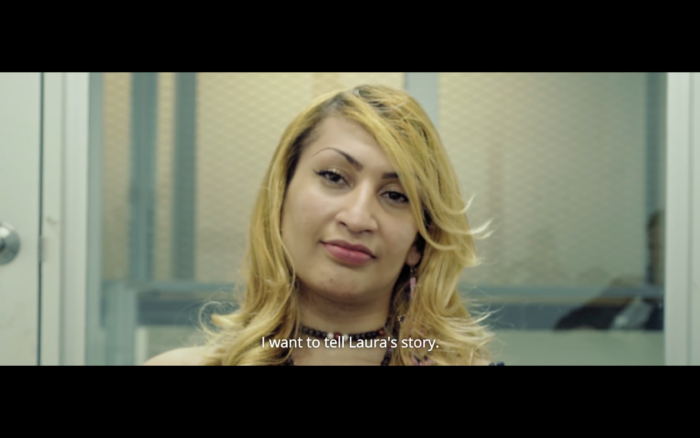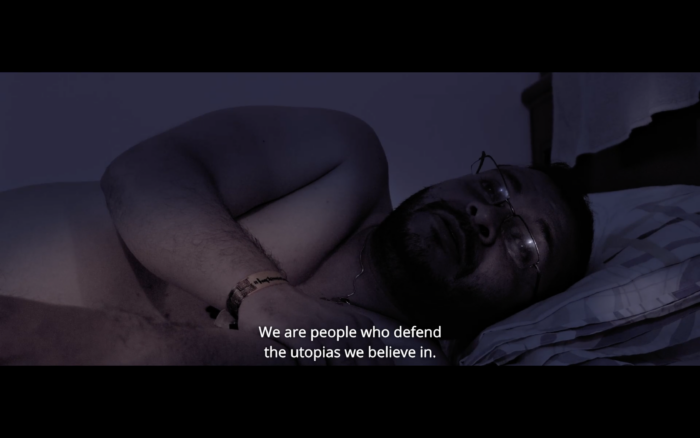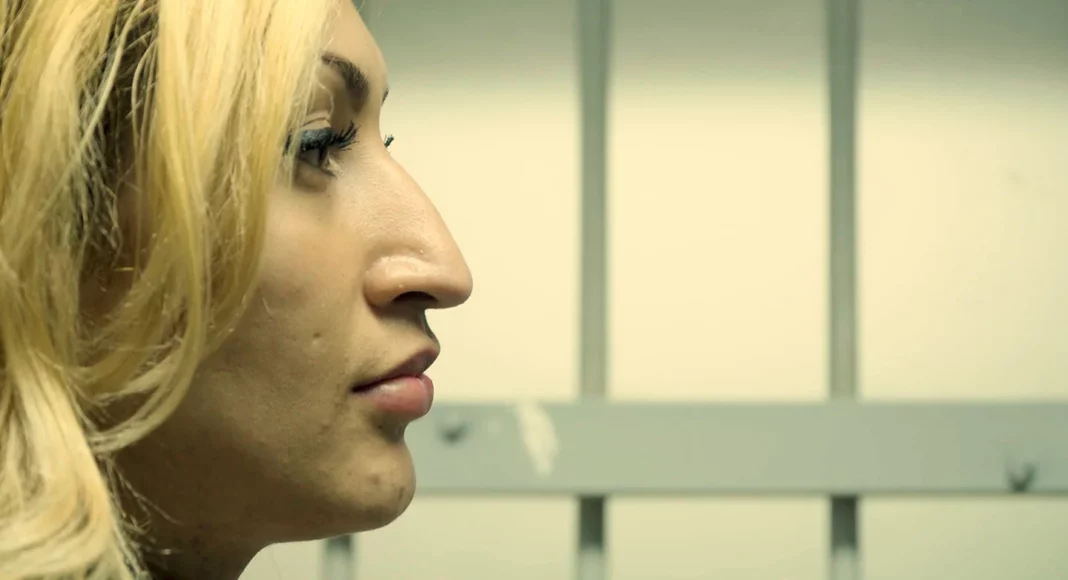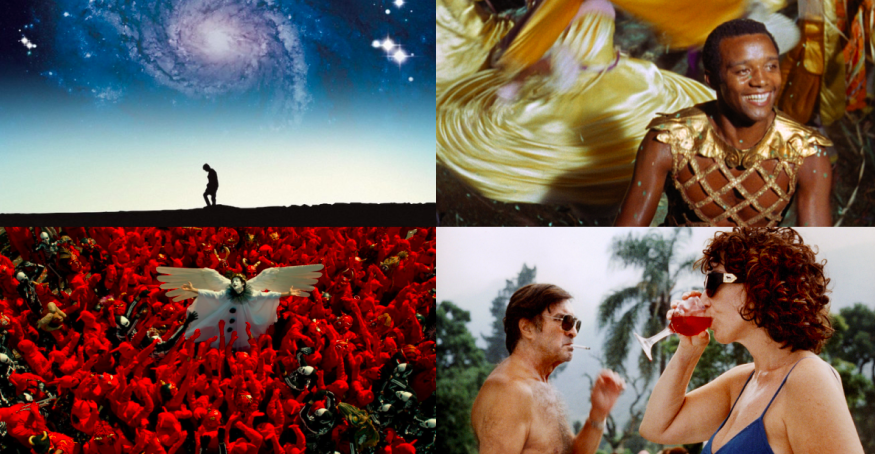On October 7, 2016 Colombian President Juan Manuel Santos was awarded the Nobel Peace Prize ‘for his resolute efforts to bring the country’s more than 50-year long civil war to an end’, despite Colombia’s rejection of the peace deal with the FARC just five days earlier in a referendum.
Amongst the objections that produced the shock result – which delayed the signing of a final agreement until the following month – was the attention to gender. A gender sub-commission had taken part in the negotiations, tasked with looking at the gender-based violence that took place during the conflict, thus ensuring that women and LGBTIQ+ groups were given a voice in the transition to peace. By broadening feminist representation to include LGBTIQ+ voices, Colombia was able to ‘queer’ its peace process, though this was not to everyone’s liking, with accusations from opponents that a ‘gender ideology’ was being imposed on Colombian society.
Transfariana, a new documentary by director Joris Lachaise, explores this transitional period in Colombia’s history through the lens of trans identity. It focuses on the unexpected collaboration between the since-disbanded FARC group and the trans activist movement in Colombia, which came about following the relationship between FARC political prisoner Jaison Murillo and Laura Zamora, a trans former sex worker who he met while in La Picota prison.
The film follows the process by which, after initially rejecting the couple’s relationship and expelling Jaison from their organization, Jaison is able to persuade the FARC leaders to overcome their mistrust and unite in a common class struggle with the trans activists. As one trans woman observes, both groups had been branded ‘monsters’ by the Colombian media, and so shared a bond born out of that discrimination.
The title of the film, Transfariana, refers to the female FARC members, the ’Farianas’, but it examines wider issues of trans rights in Colombia, through the work of the Red Comunitaria Trans and the possibility of legal shared parenthood for its founder, Daniela Maldonado Salamanca and her partner Maxi.
Following the film’s premiere in the Panorama section at the Berlin International Film Festival earlier this year, Sounds and Colours caught up with the director to find out more about his film and how he came to uncover Jaison and Laura’s story.

How did you initially connect with the group that led you into La Picota prison?
In April 2016, I was invited to a film festival in Bogota to receive an award for my previous film. The association ‘Cuerpos en prisión mentes en acción’, which defends the rights of LGBTIQ+ people incarcerated in Colombian prisons, invited me to accompany them to the high-security prison La Picota to present films from the festival and meet the inmates.
We were taken into the male prisoner area and found that a third of the participants at the workshop were transgender women.
I noticed one member of the group. Her name was Laura. Throughout our conversations, she was as convincing in expressing her political thoughts as she was accurate in describing her feelings and I began mentally filming our discussions.
When did you decide that Laura and Jaison’s story should take centre stage in your documentary?
At the end of the first day I told Guillermo, a photographer who works with the group, about my interest in Laura’s personality. He told me about her marriage in prison to Jaison, a FARC member. As soon as I heard about Jaison’s correspondence from La Picota to La Havana, I felt that this was an incredible subject that could be amplified.
The next day, we went to the common law prisoners area, where the FARC has been moved in order to release them under the peace agreement. It is housed in the old building of La Picota called ‘El Convento’. That’s where I met Jaison.
Jaison talked about the war he fought in and the peace that the country was waiting for. A peace that perhaps he himself wanted more than anyone, insofar as his release depended on the outcome of the negotiations underway in Havana between the FARC and the Colombian government. His first priority upon leaving prison would be to take care of Laura’s legal support, he said, as currently she had none.

How long had Jaison and Laura both been in prison when you met them and at what point in their relationship were they?
When I met Jaison and Laura in April 2016, he had already spent 13 years in prison and she had been there six years. But Jaison knew he would be released within a year or two, while Laura was sentenced for another 50 years. They’d met in 2012 and were married a year before I met them. The marriage was a ‘marital union’ performed by a notary in prison. It was a legal union that consecrated their relationship and was the thing that drove their social environment crazy. But from the moment that Jaison was moved to El Convento, they both knew that they would never see each other again. Their love story became a tragedy.
Can you talk a bit about how your friendship with each of them evolved so you were able to begin filming them?
In 2017, my collaborator Julia Rostagni and I went to visit Jaison, Laura, and Yurani in prison regularly over the course of four months. I was optimistic that I would be able to get my camera into La Picota. But there were forces opposing the project. So I suggested to Jaison that he film himself in prison with his cell phone and send me his self-portrait videos. He also gave me videos of propaganda and internal communication within the FARC. This communication through image exchange developed into a wonderful relationship with Jaison. We gradually learned to create a common language.
Meanwhile, we were also visiting Laura. But it wasn’t until the following year, 2018, that I got permission to film her in the high-security wing.
You mentioned in an interview that your film became part of a wider political debate on gender in Colombia, can you expand on that?
What interested me from the beginning about the story of Jaison and Laura’s relationship was the fact that it was a revolutionary trigger. It revealed a paradigm shift that was taking place but was not yet visible to everyone. The controversy that it created within the FARC organization and the impact that it had on the peace accords spread to the whole of Colombian society. Under the gaze of the international community, issues of gender diversity, discrimination, and the violence associated with them became the focus of public debate. I think that at the time, the fact that I was making this film was a kind of catalyst. But what was especially beautiful was the way in which the different protagonists of the film reformulated these gender issues in more precise, more complex, and more unique ways. The intelligence that Jaison, Laura, Max, and Daniela show in the film is this ability to push the reflections beyond binary positions, which in Colombia are accentuated by a very marked political polarization.
Has Transfariana been shown in Colombia?
We organized a private screening of Transfariana at the Cinemateca in the centre of Bogotá in January. I was very afraid that the film would disappoint or hurt them. Fortunately, the girls of Santa Fé [a neighbourhood in central-south Bogotá known for sex work, also home to the Red Comunitaria Trans – the Trans Community Network safehouse] loved it. Daniela Maldonado [founder of the Red Comunitaria Trans], who is a great voice of sex workers in Bogotá, tells me that Transfariana gives meaning to their struggles. She came to present the film at the Berlinale, and each time there was a standing ovation from the audience for her, because she is very engaging in the film, but also because of everything she represents.

Jaison was freed in 2016 following the peace agreement, but was later ‘illegally’ arrested in 2019. Are you still in touch?
I remember being surprised at the time to learn about this arrest through the press. I immediately contacted him and he told me that it was a non-event, a stutter in the process of implementing the peace agreements. As seen in the film, I filmed Jaison’s release in June 2017 after 14 years of detention. Outside prison, he continues to be the spokesperson for his fellow detainees. After the film, Jaison joined parliamentary politics in Bogotá. He is now interested in legislative work. He is also trying to give his political group more space and voice in the left-wing coalition that now governs the country.
Transfariana is available on Arte TV in Europe. You can watch the trailer here.
This interview was originally published by our partner, Sounds and Colours.


